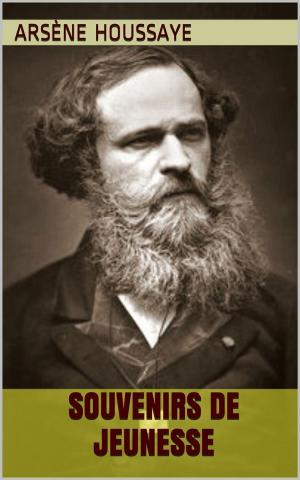| Author: | Lee B Croft | ISBN: | 9780988476806 |
| Publisher: | Sphynx Publications | Publication: | July 15, 2012 |
| Imprint: | ibook edition | Language: | English |
| Author: | Lee B Croft |
| ISBN: | 9780988476806 |
| Publisher: | Sphynx Publications |
| Publication: | July 15, 2012 |
| Imprint: | ibook edition |
| Language: | English |
Circumstances attendant to the Napoleonic wars in Europe caused Dr. George Anton Schaeffer (1779-1836) and his wife Barbara to move to Moscow, Russia, in 1810. They do well in Moscow society, gaining influential friends and considerable wealth in George's venture to manufacture laudanum as an anesthetic for the military. They become Russian citizens, move into a large house with servants, and, in early 1812, have a daughter Inga. When Napoleon Bonaparte violates the terms of the Tilsit Treaty of friendship with Russia in June of that year and invades Russia with his Grande Armee of more than a half million soldiers, George accepts from Moscow's Governor-General Fyodor Rostopchin a position as administrator of a secret project of Tsar Alexander I to construct a shark-shaped, hydrogen-filled, rotor-wing-powered, balloon from which to drop timed-fuse explosives on Napoleon and his soldiers before the critical Battle of Borodino for Moscow on 26 August (7 September on the French calendar), 1812. After the attempt fails, George is in charge of evacuating the balloon project to Nizhnii Novgorod as Napoleon and his army occupies Moscow. After a hard winter in Nizhnii Novgorod, George disassociates himself from the "balloon master," Franz Leppich and takes up residence in a St. Petersburg mansion. In order to avoid threatening legal consequences of his involvement in the failed balloon project, George signs on to a Russian Navy Ship, the SUVOROV, which is (in this second book of the trilogy) making a "reverse circumnavigation" (west to east) of the world in order to supply the outpost of the Russian-American Company in Sitka, Alaska. He leaves his wife Barbara and daughter Inga in affluent circumstances in St. Petersburg for over five years, while he travels the world. He is stranded in Sitka because of disagreements with the SUVOROV's Captain Mikhail Lazarev. and, in the fall of 1815 he is sent by Russian-American Governor Alexander Baranov on a mission to the Hawaiian islands. There he uses his astonishing skill in language acquisition to gain the favor of King Kamehameha and his most powerful Queen Ka'ahumanu to be granted a lease on the O'ahu district of Waikiki to grow crops to sustain the Sitka outpost. There he quarrels with Kamehameha's English advisor John Young and finds himself at odds with the island-trading Captains of both U.S. and British ships. These troubles cause him to leave O'ahu with a significant portion of his party of Russians and Aleuts from Alaska and seek sanctuary on the island of Kaua'i with its King Kaumuali'i, who is dissatisfied with his 1810 agreement to cede future control of his dominion to Kamehameha and his successors. George and King Kaumualii become close as a result of George's promises to make Kauai a protectorateship of the Russian Tsar, something he really did not have the authority to do. But George is given significant land on Kauai (e.g. Hanalei) as his personal possession, and manages the building of three forts on the island, two of which have remnants still in evidence. By summer of 1817, however, George's situation on Kaua'i and in the Hawaiian islands generally, is eroded to the point that he has to flee on the American ship PANTHER, whose Captain he had once rescued from a severe dental infection. From Hawaii, George travels (in the third book of the trilogy) to Canton, China, where Sir Anders Ljundstedt, the Swedish consul, gives him legal and financial aid enabling him to travel back to Europe through Rio de Janeiro to reunite with his wife and daughter. A significant part of the relation tells us what his wife Barbara's life was like in St. Petersburg during the five years of his absence, and this involves some highly colorful characters, including John Quincy Adams, General Alexander Tormasov, Nikolai and Ekaterina Karamzin, Peter Dobell, and Count Fyodor "The American" Tolstoy. But George and Barbara decide to liquidate their assets and leave Russia...
Circumstances attendant to the Napoleonic wars in Europe caused Dr. George Anton Schaeffer (1779-1836) and his wife Barbara to move to Moscow, Russia, in 1810. They do well in Moscow society, gaining influential friends and considerable wealth in George's venture to manufacture laudanum as an anesthetic for the military. They become Russian citizens, move into a large house with servants, and, in early 1812, have a daughter Inga. When Napoleon Bonaparte violates the terms of the Tilsit Treaty of friendship with Russia in June of that year and invades Russia with his Grande Armee of more than a half million soldiers, George accepts from Moscow's Governor-General Fyodor Rostopchin a position as administrator of a secret project of Tsar Alexander I to construct a shark-shaped, hydrogen-filled, rotor-wing-powered, balloon from which to drop timed-fuse explosives on Napoleon and his soldiers before the critical Battle of Borodino for Moscow on 26 August (7 September on the French calendar), 1812. After the attempt fails, George is in charge of evacuating the balloon project to Nizhnii Novgorod as Napoleon and his army occupies Moscow. After a hard winter in Nizhnii Novgorod, George disassociates himself from the "balloon master," Franz Leppich and takes up residence in a St. Petersburg mansion. In order to avoid threatening legal consequences of his involvement in the failed balloon project, George signs on to a Russian Navy Ship, the SUVOROV, which is (in this second book of the trilogy) making a "reverse circumnavigation" (west to east) of the world in order to supply the outpost of the Russian-American Company in Sitka, Alaska. He leaves his wife Barbara and daughter Inga in affluent circumstances in St. Petersburg for over five years, while he travels the world. He is stranded in Sitka because of disagreements with the SUVOROV's Captain Mikhail Lazarev. and, in the fall of 1815 he is sent by Russian-American Governor Alexander Baranov on a mission to the Hawaiian islands. There he uses his astonishing skill in language acquisition to gain the favor of King Kamehameha and his most powerful Queen Ka'ahumanu to be granted a lease on the O'ahu district of Waikiki to grow crops to sustain the Sitka outpost. There he quarrels with Kamehameha's English advisor John Young and finds himself at odds with the island-trading Captains of both U.S. and British ships. These troubles cause him to leave O'ahu with a significant portion of his party of Russians and Aleuts from Alaska and seek sanctuary on the island of Kaua'i with its King Kaumuali'i, who is dissatisfied with his 1810 agreement to cede future control of his dominion to Kamehameha and his successors. George and King Kaumualii become close as a result of George's promises to make Kauai a protectorateship of the Russian Tsar, something he really did not have the authority to do. But George is given significant land on Kauai (e.g. Hanalei) as his personal possession, and manages the building of three forts on the island, two of which have remnants still in evidence. By summer of 1817, however, George's situation on Kaua'i and in the Hawaiian islands generally, is eroded to the point that he has to flee on the American ship PANTHER, whose Captain he had once rescued from a severe dental infection. From Hawaii, George travels (in the third book of the trilogy) to Canton, China, where Sir Anders Ljundstedt, the Swedish consul, gives him legal and financial aid enabling him to travel back to Europe through Rio de Janeiro to reunite with his wife and daughter. A significant part of the relation tells us what his wife Barbara's life was like in St. Petersburg during the five years of his absence, and this involves some highly colorful characters, including John Quincy Adams, General Alexander Tormasov, Nikolai and Ekaterina Karamzin, Peter Dobell, and Count Fyodor "The American" Tolstoy. But George and Barbara decide to liquidate their assets and leave Russia...















